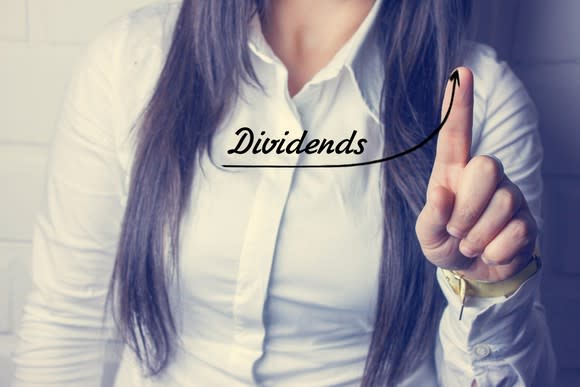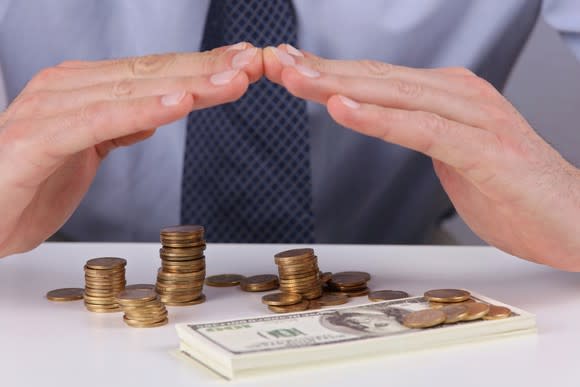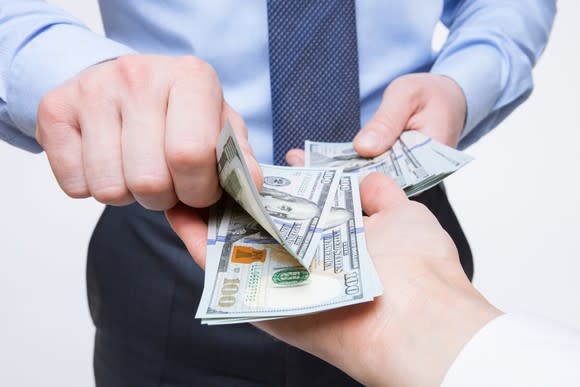2 Cheap Dividend Stocks You Can Buy Right Now
Patient investors who let cash accumulate during the bull market of early 2018 have more than leftover turkey to be thankful for at the moment. After tumbling along with much of the broad market, shares of AbbVie (NYSE: ABBV) and Physicians Realty Trust (NYSE: DOC) offer healthy dividends at attractive yields.
Above-average yields always come with extra risks that investors need to understand. With powerful demographic trends in their favor, though, these two dividend-paying healthcare stocks are poised to outperform over the long run.

Image source: Getty Images.
Physicians Realty Trust: The doctors will pay you now
Physicians Realty Trust is a real estate investment trust (REIT) that makes nearly all its money by collecting rent from medical office buildings that it owns but doesn't operate. Despite a solid performance, the stock has fallen 5% this year and offers a nice 5.4% yield at recent prices.
The first baby boomers began turning 65 in 2011, and are an age group that spends around three times as much on healthcare each year as other groups. This long-running demographic trend and a hands-off approach could allow this REIT to pay a steadily growing dividend throughout your retirement.
Physicians Realty has relationships with large health systems that can keep paying the rent even if conditions in one geographic area stumble. At the end of September, 96% of this REIT's portfolio of 250 properties were leased with an average term of eight years. Four-fifths of leases are of the triple-net variety, which leaves its renters responsible for all the variable costs that come with its properties, including taxes and building maintenance.
Physicians' real estate portfolio has grown at a hair-raising pace from $124 million in 2013 to $4.3 billion at the end of September. The REIT has completed three nine-figure portfolio acquisitions since the beginning of 2015, and funds from operations (FFO) per share have risen 198% over the same time frame.
In the years ahead, it looks like we can expect the company to raise its payout at roughly the same pace as its fast-growing bottom line. Physicians Realty's most recent quarterly dividend, when annualized, works out to just 79% of FFO generated over the past 12 months.

Image source: Getty Images.
AbbVie: A Dividend Aristocrat offering 5%
When AbbVie reported third-quarter earnings recently, management raised its adjusted earnings-per-share outlook to a level that is 41% higher than last year. Despite being a Dividend Aristocrat with screaming-fast earnings growth, AbbVie stock has fallen about 30% from a peak reached in January, when it assured investors that Humira sales would continue rising for at least a few more years despite the expiration of its main U.S. patent.
Global Humira sales reached an annualized run rate of $20.5 billion in the third quarter, which means it still makes up 62% of total revenue for the company. A handful of drugmakers with approved Humira biosimilars likely to launch at competitive prices have agreed to hold off until 2023 in the U.S.
Big pharma hasn't been nearly as successful at holding back biosimilar competition in Europe, where AbbVie books a significant portion of Humira sales. International Humira revenue that reached an annualized $6.3 billion in the third quarter will probably become a high-water mark. Humira biosimilars launched in the EU in October, and AbbVie has already begun offering government payers deep discounts to maintain its share of the market.
To help investors forget about impending Humira losses, AbbVie has already boosted its dividend payout twice in 2018. Despite giving shareholders a 51% raise this year, AbbVie's operations are profitable enough to suffer a big hit and retain its Dividend Aristocrat status. The recently raised payout, when annualized, works out to just 56% of the free cash flow that operations generated over the past 12 months.

Image source: Getty Images.
Humira is probably near a peak, but AbbVie is trading at just 11.3 times free cash flow right now. That's cheap enough to deliver market-thumping gains over the long run, as long as the company's late-stage pipeline continues to deliver blockbusters that offset Humira losses.
AbbVie's Orilissa recently became the first new treatment to reduce pain and other symptoms of endometriosis, and a study to support an expansion to treat women affected by uterine fibroids recently reported blockbuster results. These conditions affect a majority of women before they reach the age of 50, and available treatment options don't always get the job done.
Something for everyone
Orilissa is just one of several products in position to offset impending Humira losses over the next several years and help AbbVie crank up that dividend even higher. While it's a cheap dividend stock worth buying now, unexpected trouble with drugs in development or swifter-than-expected Humira losses could send the shares into a tailspin.
If you're more interested in steady gains and don't have a stomach for roller-coaster investing, Physicians Realty Trust is probably right up your alley.
More From The Motley Fool
Cory Renauer has no position in any of the stocks mentioned. The Motley Fool has no position in any of the stocks mentioned. The Motley Fool has a disclosure policy.
